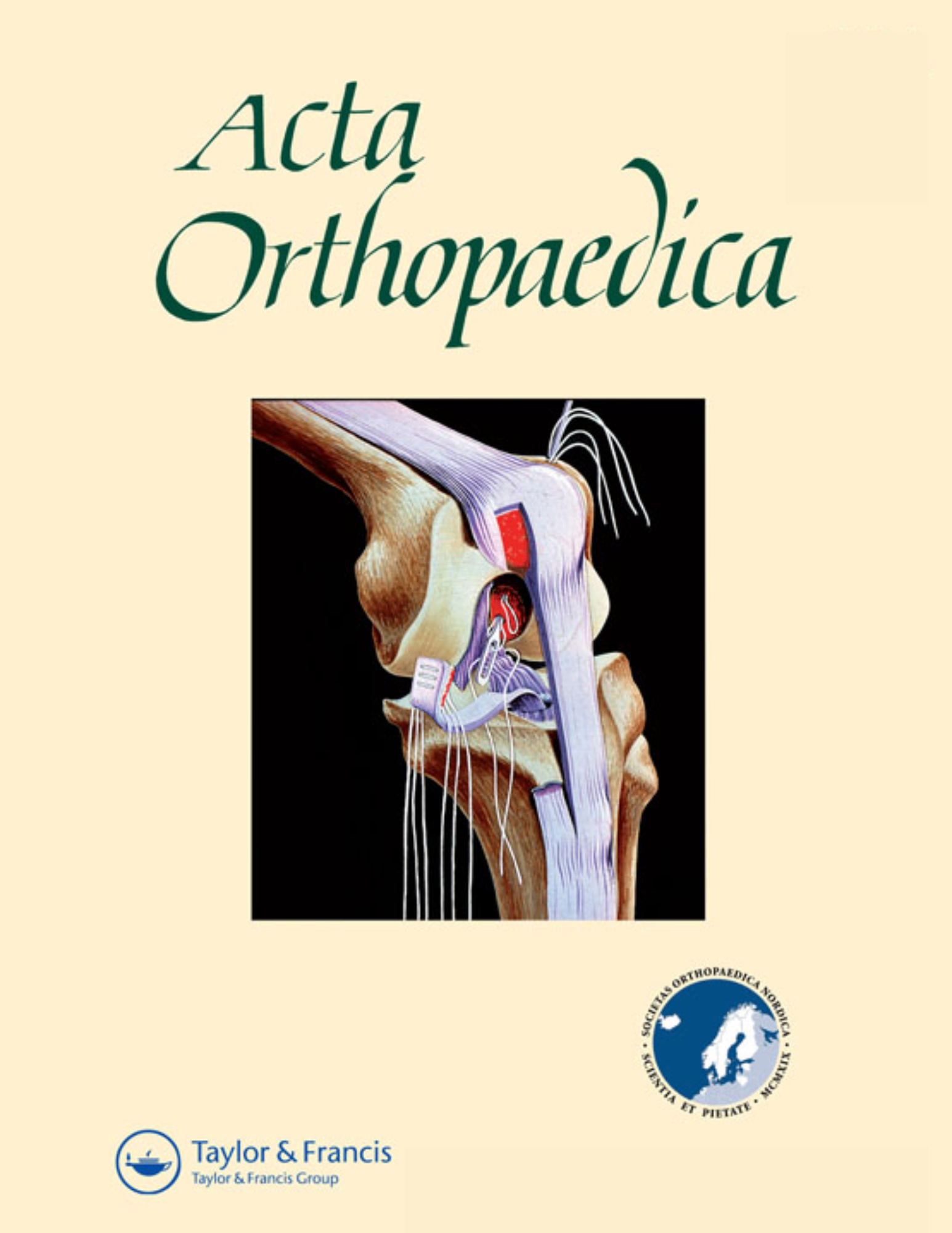
TKA: Better implant stability but comparable functionality with HA-coated tibial implants

TKA: Better implant stability but comparable functionality with HA-coated tibial implants
Hydroxyapatite (HA) coating appears to be of benefit for implant durability of tibial components in primary total knee arthroplasty
Acta Orthop. 2011 Aug;82(4):448-59. Epub 2011 Jun 10Did you know you're eligible to earn 0.5 CME credits for reading this report? Click Here
Synopsis
This systematic review and meta-analysis identified 14 trials, which included 926 evaluable total knee arthroplasties. These studies examined the effect of hydroxyapatite (HA)-coating on tibial implant durability in primary total knee arthroplasty (TKA), in comparison other forms of tibial fixation. The primary outcomes in the selected studies were durability, function, and acute adverse events. Results indicated that the functionality between the types of implants were comparable, but durability with the HA-coated tibial implant may be better than other tibial implants in patients >65 years. There were no differences in adverse events between HA coated implants and other forms of tibial fixation.
Were the search methods used to find evidence (original research) on the primary question or questions stated?
Was the search for evidence reasonably comprehensive?
Were the criteria used for deciding which studies to include in the overview reported?
Was the bias in the selection of studies avoided?
Were the criteria used for assessing the validity of the included studies reported?
Was the validity of all of the studies referred to in the text assessed with use of appropriate criteria (either in selecting the studies for inclusion or in analyzing the studies that were cited)?
Were the methods used to combine the findings of the relevant studies (to reach a conclusion) reported?
Were the findings of the relevant studies combined appropriately relative to the primary question that the overview addresses?
Were the conclusions made by the author or authors supported by the data and or analysis reported in the overview?
How would you rate the scientific quality of this evidence?
Yes = 1
Uncertain = 0.5
Not Relevant = 0
No = 0
The Reporting Criteria Assessment evaluates the transparency with which authors report the methodological and trial characteristics of the trial within the publication. The assessment is divided into five categories which are presented below.
4/4
Introduction
3/4
Accessing Data
4/4
Analysing Data
4/4
Results
3/4
Discussion
Detsky AS, Naylor CD, O'Rourke K, McGeer AJ, L'Abbé KA. J Clin Epidemiol. 1992;45:255-65
The Fragility Index is a tool that aids in the interpretation of significant findings, providing a measure of strength for a result. The Fragility Index represents the number of consecutive events that need to be added to a dichotomous outcome to make the finding no longer significant. A small number represents a weaker finding and a large number represents a stronger finding.
Why was this study needed now?
There is uncertainty on the clinical benefits of hydroxyapatite (HA)-coating in tibial components, as a part of total knee arthroplasty. HA-coatings on implants may promote greater stable fixation due to its osteoconductive properties, which promote early bone in-growth. This meta-analysis was conducted to evaluate the clinical outcomes (durability, function, and acute adverse events) in HA-coated tibial components in total knee arthroplasties.
What was the principal research question?
What are the clinical outcomes (durability, function, and acute adverse events) of hydroxyapatite (HA)-coated tibial components compared to other forms of tibial fixation in patients with knee osteoarthritis undergoing primary total knee arthroplasty measured at both short and long-term follow-up periods?
What were the important findings?
- At 2 years, tibial components coated with hydroxyapatite (HA) (porous or press-fit) without screw fixation were less likely to be unstable, compared to cemented and porous metal-backed tibial components (RR=0.58, 95%CI: 0.34-0.98; p=0.04, I2 = 39%, M-H random effects model)
- No significant difference was seen in adverse events between groups (RR=1.20, 95%CI: 0.63-2.28; p=0.58; I2 =0%; Mantel-Haenszel (M-H) fixed effects model)
- Evaluation at 2, and 8-10 years indicated no significant difference in durability between groups.
- No significant difference was seen in functional status at 2 and 5 years, regardless of the type of measure used.
What should I remember most?
Hydroxyapatite (HA)-coated implants may provide better implant stability in patients with osteoarthritis undergoing primary total knee arthroplasty (TKA), who are within the age range of 65-70 years, which may lead to a reduction in the need for revision later in the implant life. No difference was apparent in functionality between the HA-coated and other tibial implants, when measured by different validated scoring systems. No significant difference was seen in adverse events between groups.
How will this affect the care of my patients?
Trials with a larger population should be performed to determine the long-term outcomes of HA-coated implants and other porous-coated tibial implants, in younger (<65 years) and more active individuals with osteoarthritis.
Learn about our AI Driven
High Impact Search Feature
Our AI driven High Impact metric calculates the impact an article will have by considering both the publishing journal and the content of the article itself. Built using the latest advances in natural language processing, OE High Impact predicts an article’s future number of citations better than impact factor alone.
Continue



 LOGIN
LOGIN

Join the Conversation
Please Login or Join to leave comments.